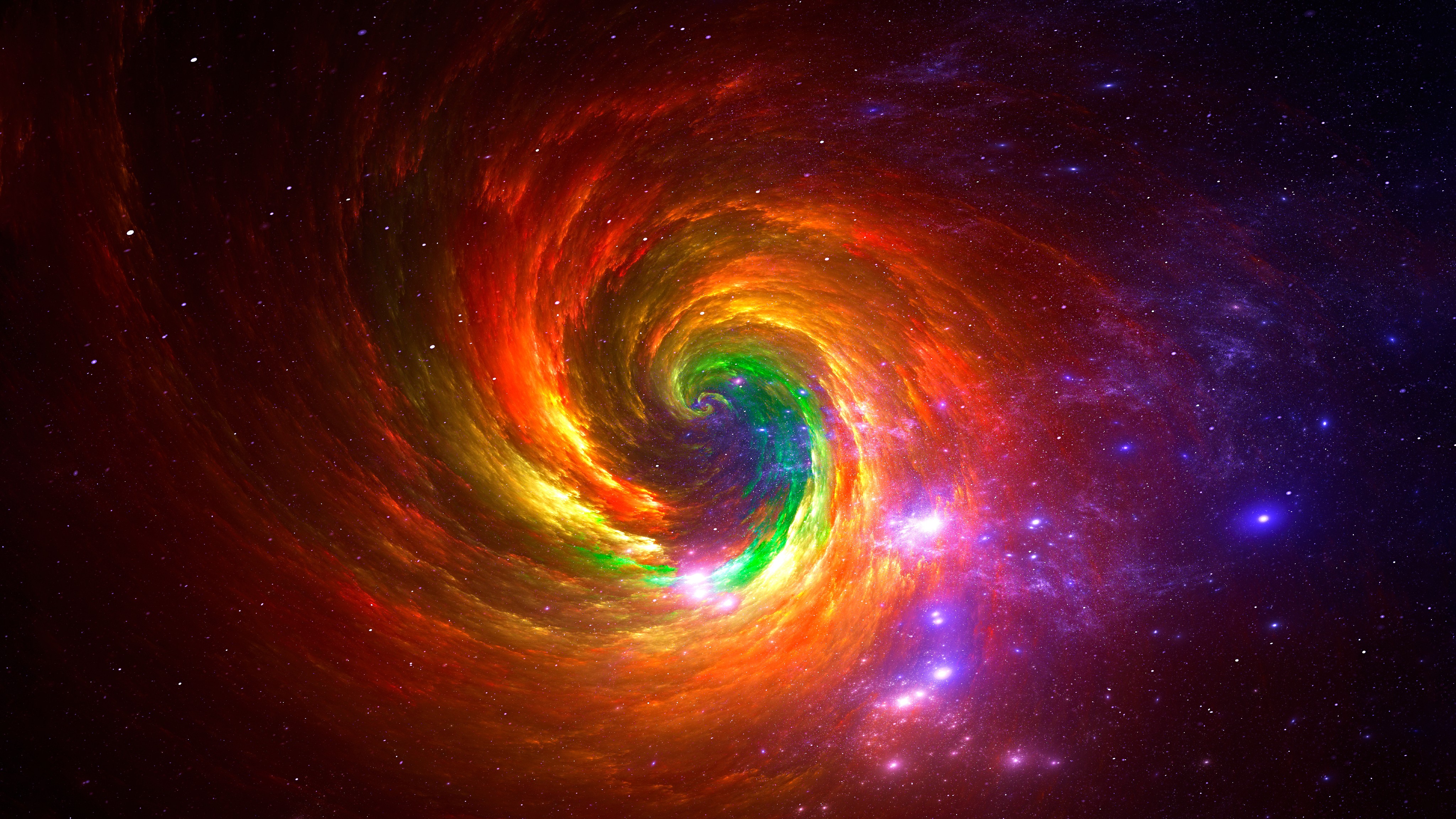The universe’s invisible dark matter might swirl into spinning clumps laced with countless tiny vortices, new theoretical work suggests.
The findings, published May 30 in the journal Physical Review D, offer a fresh perspective on the strange behavior of “ultralight” dark matter — a hypothetical substance made of extremely light elementary particles.
In the new study, physicists explored what happens when a dark matter halo rotates — a natural expectation for real galaxies, which typically spin as they evolve. Based on their theoretical modeling and detailed simulations, the authors found that this exotic material could behave like a superfluid, forming stable, rotating cores threaded with vortex lattices much like those seen in laboratory experiments.
A special kind of dark matter
Unlike the standard view of dark matter as a cloud of heavy, sluggish particles with no internal structure, the new research focuses on dark matter made of particles lighter than a millionth of an electron’s mass. These particles may not float passively in space; if they interact slightly with one another through a repulsive force, they can behave more like a quantum fluid.
That fluid-like behavior allows the formation of “solitons” — compact, coherent structures where gravity’s pull inward is balanced by an outward pressure from self-interactions.
“Solitons are classical solutions of the equations of motion,” Philippe Brax, a theoretical physicist at Université Paris-Saclay and co-author of the study, told Live Science. “They correspond to hydrostatic equilibria where the attractive gravitational force is balanced by the repulsive particle self-interaction, somewhat like the Sun, which is also in hydrostatic equilibrium.”
These solitons could range from the size of stars to entire galaxies, depending on the unknown mass of the dark matter particle. In larger cases, they could help explain why the centers of galaxies appear less densely packed with dark matter than predicted — a long-standing issue in cosmology.
From spinning clouds to vortex lattices
The researchers simulated what happens when clouds of this unusual dark matter rotate. The result was surprising: Instead of spinning smoothly like a hurricane or a solid sphere, the solitons developed an internal lattice of microscopic vortices.
“When the initial conditions are such that the dark matter cloud rotates, the end result is a rotating soliton at the center of the collapsed halo,” said study co-author Patrick Valageas, also of the Université Paris-Saclay. “This soliton shows an oblate shape aligned with the initial rotation axis, and displays a solid-body rotation supported by quantized vortices.”
These vortices aren’t like swirling winds or whirlpools in water. Rather, they resemble the quantized vortex lines that appear in superfluids like liquid helium, where the fluid rotates not as a whole but through an array of discrete spinning threads. At the center of each vortex, the dark matter density drops to zero, and together, the vortices align into a regular, lattice-like pattern.
“Our simulations show that these vortex lines are aligned with the total angular momentum and follow circular orbits inside the soliton,” Valageas said. “The rotation is not like a smooth wind but more like a bundle of microscopic tornadoes arranged in a crystal pattern.”
One intriguing idea the researchers raised is whether these tiny vortex structures have implications on much larger scales. In particular, they speculated that some vortex lines might extend beyond a single halo, connecting galaxies through the vast filaments of the cosmic web — the gigantic tendrils of dark matter that shape the universe’s large-scale structure.
“At this stage, the idea that some of these vortex lines could join different halos through the filaments of the cosmic web is a hypothesis,” Brax noted. If true, it could mean that quantum effects in dark matter subtly influence how galaxies align and move within these colossal threads.
Detecting such vortex structures would be challenging. Because dark matter doesn’t emit or absorb light, scientists can only infer its presence from its gravitational influence on visible matter like stars and gas.
Still, there may be ways to glimpse their effects. “These vortices are associated with troughs in the dark matter density,” Brax said. “As such, they imprint characteristic features in the gravitational potential, which may influence the orbits of stars or gas clouds in galaxies like the Milky Way.”
In more speculative scenarios, if dark matter interacts even weakly with ordinary matter or light, the vortices might leave more direct fingerprints — but for now, that remains an open question.
The team plans to investigate whether the predicted vortex lattices can be detected through astronomical observations and whether they truly connect to the cosmic filaments that stretch across space.
For now, these ghostly whirlpools remain invisible — but as theory and technology advance, scientists may find that the cosmos is not just filled with unseen matter but woven with patterns of spinning quantum threads.
